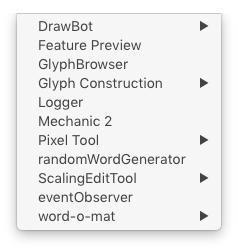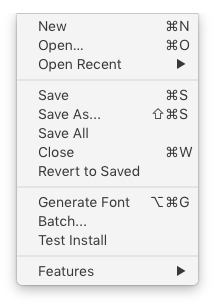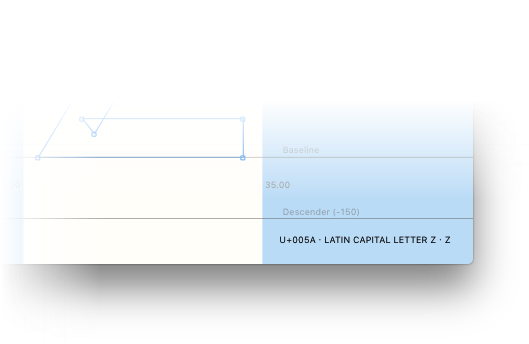Where to find installed extensions ↩
- Extensions menu
- Tools menu
- New entries in existing menus
- New submenu in the main application menu
- No visible UI control
So you have installed an extension, either manually or via Mechanic. And now you want to use it. But wait, where can I find it?!
How an extension is activated and used depends on each extension and the type of tool it contains – look at the extension’s documentation for usage instructions.
This page gives an overview of the different ways an extension can make itself accessible in RoboFont.
Extensions menu
This is the standard mechanism for making extensions available, and by far the most common case. The extension adds an entry to the Extensions menu, with or without a submenu. From there, one or more dialogs can be opened.

Examples: RoboREPL, FeaturePreview, DrawBot
Tools menu
Some extensions contain interactive tools which are used when editing glyphs. These extensions make themselves available by adding an entry to the toolbar at the top of the Glyph Editor subview.

Examples: Pixel Tool, Scaling Edit Tool
New entries in existing menus
Some extensions add entries to other Application Menu items instead of Extensions. This makes sense for extensions which add functionality to objects which are already present in the main application menu, such as Font, Glyph or Window.

Examples: Arrange Windows, Batch
New submenu in the main application menu
While not very common, this is a useful solution for extensions which require lots of menu space. Instead of cluttering the Extensions menu, the extension can add its own menu to the main application menu.

Examples: hTools2
No visible UI control
Finally, some extensions don’t add any menu item or tool. They do their job silently by adding new layers of information to existing views.

Examples: Show Character Info, Show Mouse Coordinates, ShowDist